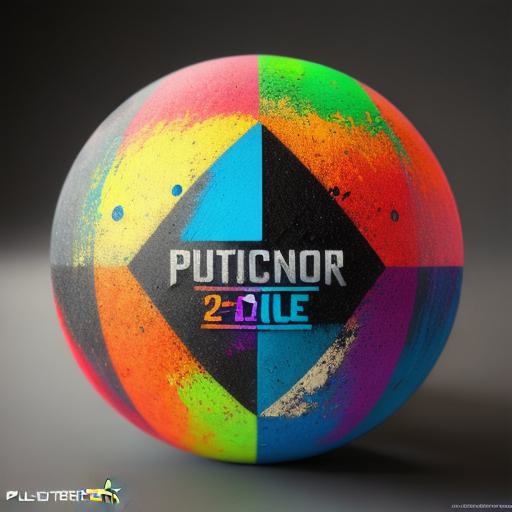In today’s fast-paced world, game development has become an increasingly popular industry, with more and more people looking to create their own games. However, designing an effective user experience (UX) for game development tools can be a challenge, especially if you’re new to the field. In this comprehensive guide, we will explore some of the key principles and best practices for creating a UX that works well for game developers.

Introduction: The Importance of User Experience in Game Development Tools
Before we dive into the specifics of designing a user experience for game development tools, it’s important to understand why user experience is so critical in this industry. In games, the UX refers to the way players interact with the game and its various elements. A well-designed UX can make all the difference between a game that people love playing and one that they abandon after just a few minutes.
The same principles apply to game development tools. Developers need to be able to easily navigate and use the tools in order to create their games effectively. If the UX is poor, developers may become frustrated and give up on the project altogether. On the other hand, if the UX is well-designed, it can help developers work more efficiently and produce higher-quality games.
Key Principles of User Experience Design for Game Development Tools
Now that we’ve established the importance of user experience in game development tools let’s explore some key principles that you should keep in mind when designing your own UX:
- Simplicity
One of the most important principles of UX design is simplicity. Game development tools should be easy to use and navigate, with clear and concise instructions on how to accomplish each task. You want developers to be able to start working on their game as quickly and easily as possible, without having to spend time figuring out how to use the tool.
- Consistency
Consistency is another key principle of UX design. All elements of the game development tool should be consistent with each other, making it easier for developers to understand how the tool works and how different elements relate to one another. This includes the way buttons are labeled, the way menus are organized, and the way data is displayed.
- Intuitiveness
Intuition plays a crucial role in UX design. Game development tools should be designed with the user’s needs and goals in mind, making it easy for them to accomplish their tasks without having to think too much about it. This includes things like predictable behavior of buttons and menus, clear visual cues, and logical workflows.
- Accessibility
Accessibility is an important consideration when designing a UX for game development tools. The tool should be designed with accessibility in mind from the start, so that it can be used by people with disabilities such as vision or hearing impairments. This includes things like providing alternative text for images and videos, using high-contrast colors, and making sure that all elements on the screen are easily clickable.
- Feedback
Feedback is another key principle of UX design. Game development tools should provide clear and immediate feedback to developers as they work on their game. This includes things like displaying error messages when something goes wrong, providing visual cues that indicate progress, and displaying notifications when new data becomes available.
Case Studies: Successful User Experience Designs for Game Development Tools
Now that we’ve discussed some key principles of UX design let’s take a look at some real-life examples of successful user experience designs for game development tools:
- Unity
Unity is one of the most popular game development engines on the market, with millions of developers using it to create everything from simple mobile games to complex PC games. Unity has a well-designed UX that makes it easy for developers to create their games, and it provides clear and concise instructions on how to accomplish each task.
- Substance Painter
Substance Painter is a powerful tool for creating textures and materials for games, with a user-friendly interface that makes it easy for developers to create high-quality textures. The tool’s intuitive workflow and clear visual cues make it easy for developers to create the textures they need without having to spend too much time figuring out how to use the tool.
- GameMaker Studio
GameMaker Studio is a game development platform that allows developers to create games using a drag-and-drop interface. The platform’s intuitive UX makes it easy for developers to create their games, and it provides clear and concise instructions on how to accomplish each task.
Real-Life Examples of Poor User Experience Design in Game Development Tools
Now that we’ve looked at some successful user experience designs let’s take a look at some real-life examples of poor user experience design in game development tools:
- Photoshop
Photoshop is one of the most popular image editing tools on the market, but it has a notoriously steep learning curve and a complex UX that can be overwhelming for beginners. The tool’s lack of clear visual cues and its reliance on complex menus can make it difficult for developers to accomplish even basic tasks.
- Final Fantasy VII Remake
The remake of the classic RPG game, Final Fantasy VII, was praised for its graphics and gameplay, but it received mixed reviews for its UX design. The game’s menus were confusing and difficult to navigate, and some players reported difficulty finding certain features and options.
- Unreal Engine
Unreal Engine is a powerful game development engine that is used by many professional developers. However, the tool’s steep learning curve and complex UX can make it difficult for beginners to get started. The tool’s lack of clear visual cues and its reliance on complex menus can make it difficult for developers to accomplish even basic tasks.
Tips and Best Practices for Designing a User Experience for Game Development Tools
Now that we’ve looked at some successful and poor user experience designs let’s explore some tips and best practices for designing your own UX for game development tools:
- Know Your Audience
Before you start designing your UX, it’s important to know who your audience is. Developers come from a wide range of backgrounds and have different needs and goals. It’s important to understand your audience’s experience with other game development tools and their expectations for your tool in order to design an effective UX.
- Start With the Basics

When designing your UX, it’s important to start with the basics. Developers should be able to easily navigate and use the tool from the very beginning, without having to spend time figuring out how to use each individual feature. This includes things like providing clear instructions on how to accomplish basic tasks, using simple language and avoiding jargon, and making sure that all elements on the screen are easily clickable.
- Keep It Simple
As we mentioned earlier, simplicity is a key principle of UX design. Game development tools should be designed with simplicity in mind from the start, so that they can be used by people with different levels of experience and skill. This includes things like using simple language and avoiding jargon, making sure that all elements on the screen are easily clickable, and providing clear visual cues that indicate progress.
- Provide Feedback
Feedback is another key principle of UX design. Game development tools should provide clear and immediate feedback to developers as they work on their game. This includes things like displaying error messages when something goes wrong, providing visual cues that indicate progress, and displaying notifications when new data becomes available.
- Test and Iterate
Finally, it’s important to test your UX design with real users and iterate based on their feedback. This includes things like conducting user testing sessions, gathering feedback from users, and making changes to the tool based on that feedback.
Conclusion
In conclusion, designing a user experience for game development tools is critical to ensure that developers can easily create their games and achieve their goals. By understanding your audience, starting with the basics, keeping it simple, providing feedback, and testing and iterating, you can design an effective UX that will make your game development tool stand out from the competition.



